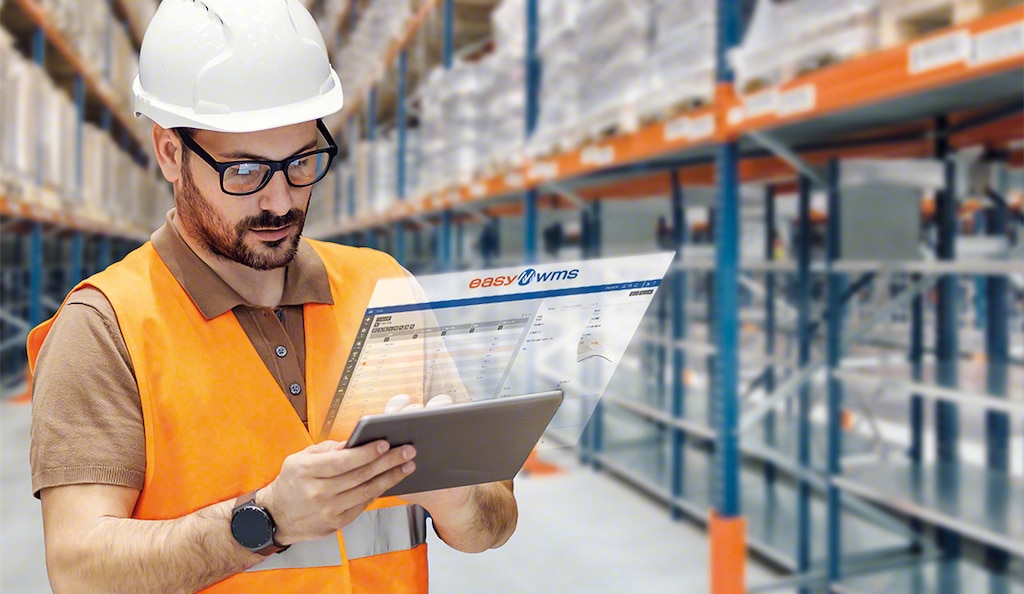
Logistics trends for 2024: the race to tech-up
What decisions will supply chain leaders make next year? What logistics trends will gain the most ground in 2024? Against a backdrop where investments in technology have either remained steady or gone up since 2020, options are narrowing for companies that fail to modernize and lag behind. In 2024, businesses have the opportunity to enhance their supply chain resilience. That is, they can implement resources to strengthen their ability to thrive in the face of challenges such as ever-faster deliveries, the rise of ecommerce, and the shortage of qualified labor.
According to the McKinsey study Digital logistics: technology race gathers momentum, logistics enterprises are investing in technology to lower costs and boost productivity in their warehouses and transportation networks. Apart from gaining a competitive edge, they’re augmenting their capabilities to ensure that this change is sustainable over time.
Let’s explore the trends that — according to renowned consulting firms — are set to shape industrial and business development in 2024 and usher in new innovations:
Logistics process digitalization
Logistics is moving forward in every aspect, and one of the clearest logistics trends for 2024 is digitalization. Advancements in this area have affected all activities taking place inside and outside facilities.
For instance, warehouse management systems (WMSs) monitor goods and the vehicles that transport them. Product traceability is becoming more sophisticated, employing RF handheld scanners, artificial vision, and even drones to read labels. This progress translates into faster item location, shorter delivery times, increased competitiveness, and enhanced customer satisfaction.
Stock visibility
Rigorously tracking inventory levels allows logistics service providers to proactively address potential issues and streamline operations. This prevents stockouts, ensuring companies can meet demand and gain a competitive edge.
To benefit from real-time visibility, businesses invest in tools such as WMS software, which analyzes performance and upgrades demand planning through data collection. Cloud-based platforms like Interlake Mecalux’s Easy WMS can be used by several employees simultaneously. These programs indicate the availability of stock at any given time, as well as its origin, location, and destination.

Warehouse automation and robotics
One of the best ways to expedite logistics operations in logistics facilities is to integrate automated systems in internal goods transport, storage, and handling operations. Solutions such as stacker cranes and the Pallet Shuttle system can be integrated — even in facilities already outfitted with racks — to make all logistics processes agile and efficient.
One example proving to be a powerful ally for dealing with demand peaks like Black Friday is picking robots. Capable of autonomously picking and placing products with great precision through deep learning, these devices can complete up to 1,000 picks per hour.
B2B ecommerce
Ecommerce began its meteoric rise with sales to individuals, in business-to-consumer (B2C) environments. However, online transactions between organizations continue to grow, fueling business-to-business (B2B) ecommerce. Companies expect from this trade model the same conveniences found in retail stores. Therefore, online wholesale retailers also use marketplaces and subscription models in their strategies. With digital solutions like Interlake Mecalux’s Marketplaces Integration, organizations can sync their logistics centers with the different online sales platforms to offer a top-notch user experience.
AI applied to logistics
Artificial intelligence (AI) in the supply chain will also be fundamental in 2024. AI-assisted software engineering will see enhancements such as autonomous code generation and translations of outdated programming languages into modern ones. Engineers will then be able to spend less time on mechanical tasks and focus on more creative endeavors.
Advances in AI will also extend beyond the R&D and IT departments. The refinement of generative AI will simplify access to internal and external information. According to Gartner’s forecasts, by 2026, more than 80% of companies will have used AI-driven applications in production environments compared to the current 5%.

Quicker deliveries
Customer expectations are ever-increasing, and organizations are competing to achieve the fastest possible shipping times. This race has resulted in the need to modify traditional logistics processes. Retailers will be setting up more regional warehouses, parcel drop-off and pick-up points, and an omnichannel strategy that enables customers to return items to places other than the point of purchase. The goal is to provide maximum flexibility and agility, making it essential to optimize business intralogistics operations.
Besides the logistics trends for 2024 mentioned above, some multinational companies such as Google and Amazon are also beginning to use drones for aerial deliveries. Google’s network, Wing, was first deployed in Australia in 2021 and expects to go from delivering thousands to millions of packages in 2024.
Machine customers
AI-powered programs that buy or sell products are known as machine customers. A household example could be a printer that detects when it runs out of ink and orders another toner cartridge autonomously. Gartner contends that this advancement will significantly influence trade and industry in the coming years.
The technology consulting firm predicts that “[b]y 2028, machine users will render 20% of human-readable digital storefronts obsolete.” The expansion of machine consumers could have a greater impact than the invention of ecommerce. Hence, Gartner recommends researching this trend and exploring market opportunities.
Preparing for logistics in 2024
In 2024, logistics and commerce will undergo dramatic transformations. Thus, it’s important to be prepared to cope with these changes and stand out from the competition. With the expansion of AI — and automation and real-time visibility as go-to strategies — it’s crucial to pay attention to logistics trends and focus your efforts on bolstering your supply chain.
Are you looking to make your logistics processes more effective without disrupting operations? Be sure to get in touch. For years, Interlake Mecalux has been implementing process digitalization and automation projects for businesses in numerous sectors, from multinational companies to small retailers. We’d be happy to assist you with any questions you may have.
